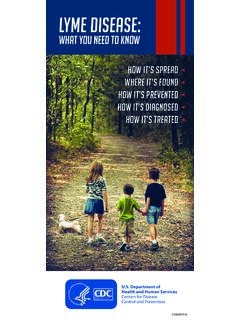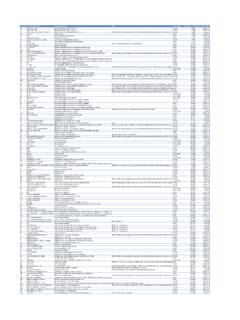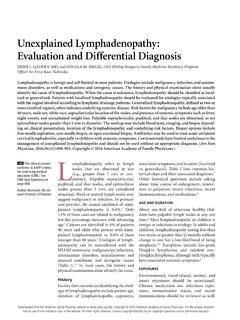Transcription of Viruses, Bacteria, Protists and Fungi - Real-World Science ...
1 Viruses, bacteria , Protists and FungiMicrobiology is the study of microscopic organisms like microbes1 Viruses A virus is a tiny NON-LIVING particle that invades and then multiples inside a living cell. 2 Viruses Viruses act like PARASITES, organisms that live in or on another organism and cause it harm. The living organism that a virus attaches to and uses as a source of energy is called the HOST. Once the HOST is carrying and transmitting a virus it is referred to as a VECTOR. 3 Viruses are smaller than cells, but can vary greatly in size and , ALL viruses have three things in PROTEIN COAT that protects INNER CORE that contains genetic material (direction for making new viruses) PROTEINS that allow it to attach to certain cells in the host.
2 Virus Structure4 The proteins on the surface of a virus play an important role during the invasion of a host shape of the surface proteins allow the virus to attach to the proteins on the surface of a host s cells. Virus Structure5 How Do Viruses Multiply? Once inside a cell, a virus genetic material takes over many of the cells functions. It instructs the cell to produce the virus s proteins and genetic material. These proteins and genetic material assemble into new viruses which go on to infect more cells. 6 Active Virus7 Hidden Virus8 Common Viruses Some viruses are very mild such as the common cold, while others, such as HIV have severe consequences for the Viruses Bacteriophage are robot like viruses that infect bacteria10 Common VirusesCommon Cold - RhinovirusThe Flu Influenza Virus11 Common VirusesChicken Pox Measles12 Common VirusesHIV-Human Immunodeficiency VirusSARS-Severe Acute Respiratory Syndrome13 Ebola Virus(Source: ) Ebola is a rare and deadly disease caused by infection with a strain of Ebola virus.
3 The 2014 Ebola epidemic is the largest in history, affecting multiple countries in West Africa. The risk of an Ebola outbreak affecting multiple people in the is very What is the main difference between a virus and an organism? What basic structures do all viruses share? What is the main goal of a virus (what is it trying to do)? What role do the proteins in a viruses outer coat play?Viruses are non-livingGenetic material, a protein coat, and surface proteinsMultiplyThey allow it to attach to it s host15 Viral TransmissionViruses can be spread in many ways: Contact with a contaminated object Bite of an infected animal In sneezes and coughs Contact with body fluids such as blood16 Viral Treatment There are currently no cures for viral diseases.
4 There are prescription medications called ANTIVIRAL DRUGS that can be used to treat influenza illness. Resting, plenty of fluids, and well balanced meals may be all you can do to help your immune system fight a Viral Diseases A VACCINE is a substance introduced into the body to trigger the bodies natural defenses. A weakened or altered version of the virus puts the body on alert . The immune system fights it off and makes antibodies so that if the virus ever infects the body it can be destroyed before it becomes Link How Virus Invades Your Body List some ways viruses can be transmitted. Since there are no cures for viruses, what can you do as a treatment?
5 How are vaccines important in preventing viral diseases? Do you think the cold virus is an active virus or a hidden virus? Why? Contact with a contaminated objectRest, treat symptomsThey trigger your immune system to make antibodies, which keep you from catching a virusActive, you are sick very soon after being exposed to the bacteria were discovered by accident in the late 1600 s by a Dutch merchant named Anton van bacteria are PROKARYOTES: Unicellular or one-celled organism No nucleus DNA in a loop in the cell Few organelles Usually have a cell wall Usually have a flagellum 22 BacteriaStructure Most bacteria cells have one of three basic shapes.
6 CoccusBacillusSpirila2324 Bacteriaobtaining food and energy Like all living things, bacteria need to have a sources of food and a way to break that food down in order to survive. Most bacteria need oxygen to break their food down, but a few do not require oxygen for food and energyAn organism that cannot manufacture its own food and instead obtains its food and energy by taking in organic substances, usually plant or animal matter. All animals, protozoans, Fungi , and most bacteria are organism that manufactures its own food from inorganic substances, such as carbon dioxide and ammonia. Most AUTOTROPHS, such as green plants, certain algae, and photosynthetic bacteria , use light for bacteria can reproduce ASEXUALLY(one parent) by means of BINARY FISSION: one cell divides into two identical bacteria can reproduce SEXUALLY(two parents) by means of CONJUNCTION: one bacteria transfers some genetic material to another bacteria through a thread like formation Some bacteria can survive harsh conditions like freezing, heating and drying by forming an endospore.
7 An endospore is a small rounded, thick walled, resting cell that forms in a bacteria cell and houses the bacterial Where is the genetic material located in a bacteria cell? What is the role of a flagella? What are two ways bacteria can obtain food? How do bacteria obtain energy to carry out their functions? In a loop of DNA in the cytoplasmHelp the bacteria moveHeterotroph (eating) Autotroph (using energy from the sun or from chemicals in it s environment to make food)Respiration or fermentation29Is bacteria Good or Bad?30Is bacteria Good or Bad?31Is bacteria Good or Bad?Salmonella 32 lyme Diseases33 History of lyme DiseaseOne theory compelling but controversial about the sudden emergence of the disease inConnecticut blames the accidental release ofinfected ticks during experiments at PlumIsland Animal disease Center, on Long IslandSound about eight miles south of lyme .
8 It resulted the first lyme disease outbreak DiseaseLyme disease is a bacterial infection primarily transmitted by Ixodes ticks, also known as deer ticks, and on the West Coast, black-legged ticks. These tiny arachnids are typically found in wooded and grassy areas. Once a tick has attached, if undisturbed it may feed for several days. The longer it stays attached, the more likely it will transmit the lyme and other pathogens into your of Bacterial Pathogens PATHOGENS are microorganisms that can cause disease In Sneezes, Coughs, Saliva: (Pneumonia, Whooping Cough, Bacterial Meningitis) By Animal Vectors: (bubonic plague, typhus) In Contaminated Food or Water: (typhoid, salmonella, e.)
9 Coli)36 ANTIBIOTICST reatment of Bacterial Pathogens The discovery of the antibiotic penicillin by Alexander Fleming in the 1920s made a big impact on human history. Not only did it lead to a cure for bacterial infections that were once deadly, but it also led a big interest in finding new antibiotics. The antibiotic penicillin is from blue-green mold and it works by keeping a bacterium from building a cell Mold38 How Antibiotic Resistance Happens? Bacterial resistance to antibiotics is produced by changes in the bacterium s DNA, called Mutations . One bacterium with a mutation can survive the antibiotic and reproduces millions more with the same resistance within the space of a Link What is bacteria ?
10 5 Kingdoms41 Describe the characteristics of Protists ? Protists are eukaryotes that can not be classified as animals, plants or Fungi . Because Protists are so diverse they are grouped according to the characteristics they share with organisms in other kingdoms. Some Protists reproduce sexually using gametes, while others reproduce asexually by binary Protists Animal-like Protists are heterotrophs and most are able to move from place to place to obtain food, however, unlike animals they are unicellular. Animal-like Protists may be called PROTOZOANS. 43 Animal-Like with Pseudopods (ex. Amoeba) with Cilia (ex.)


